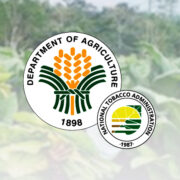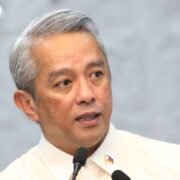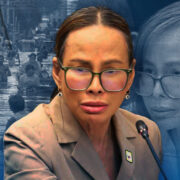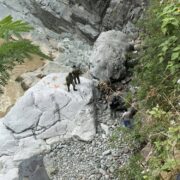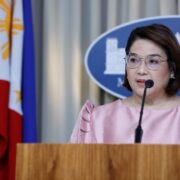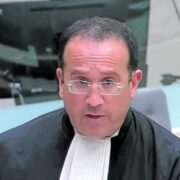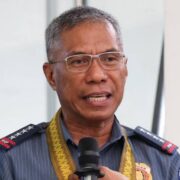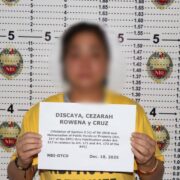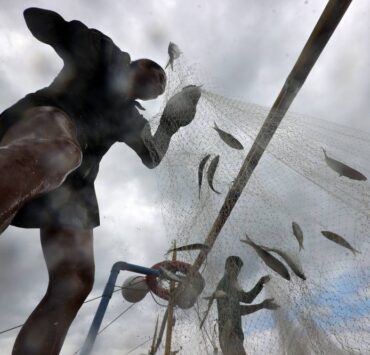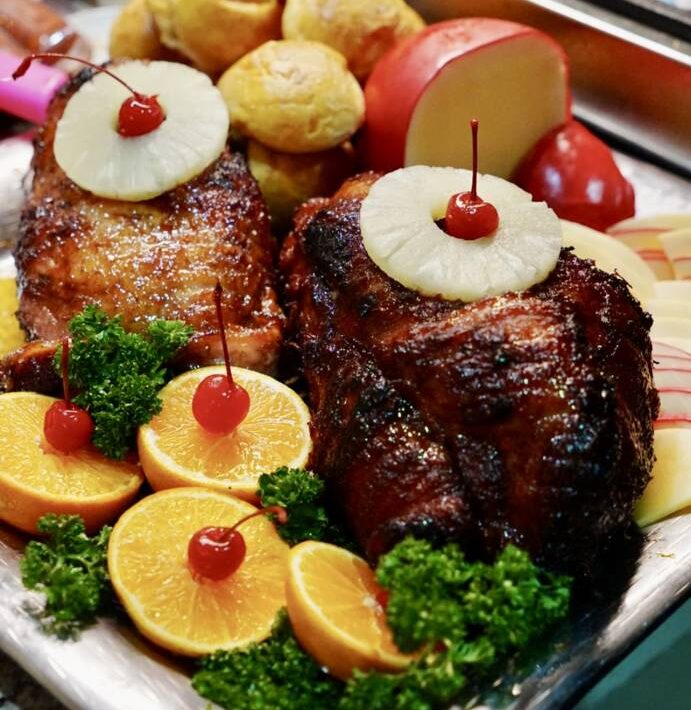Campus journalists as torch-bearers for truth
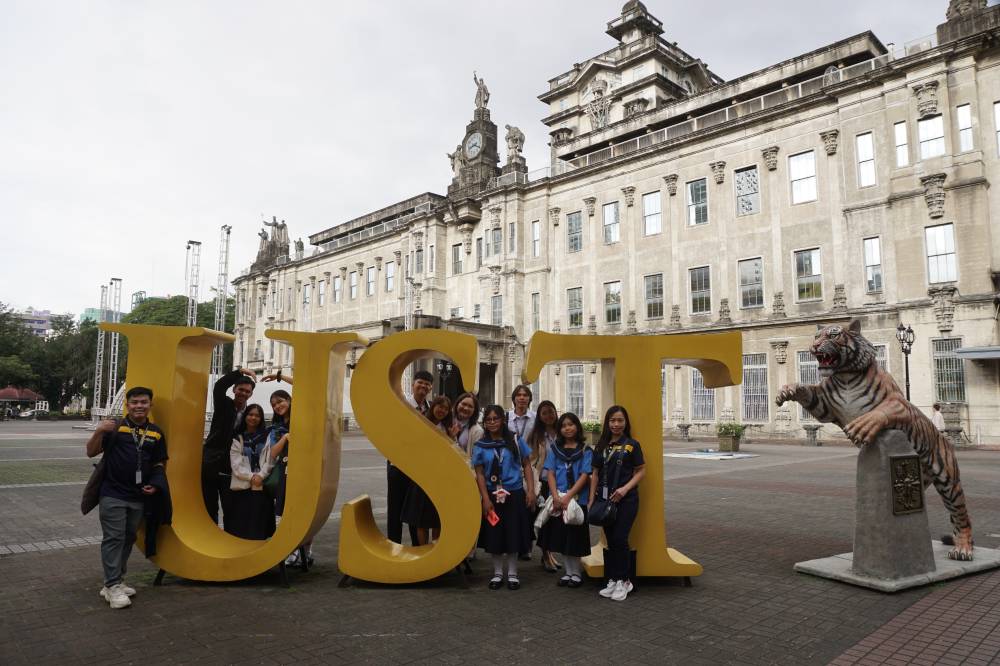
Ever wondered how to be an effective journalist? Since I first began my stint in journalism, I’ve always aspired to meet and listen to the best in the field. I’ve read their works, listened to their podcasts, and written them love letters, all in the hopes of being blessed by their creative intellect.
I started hearing about their gatherings—writing workshops and fellowships—with the most prestigious for me being Inkblots. So when my alma mater, University of Santo Tomas-Angelicum College (USTAC), told me I’d be sent as part of their delegation to this year’s Inkblots, I said yes faster than you can sing “APT.” by Rosé and Bruno Mars.
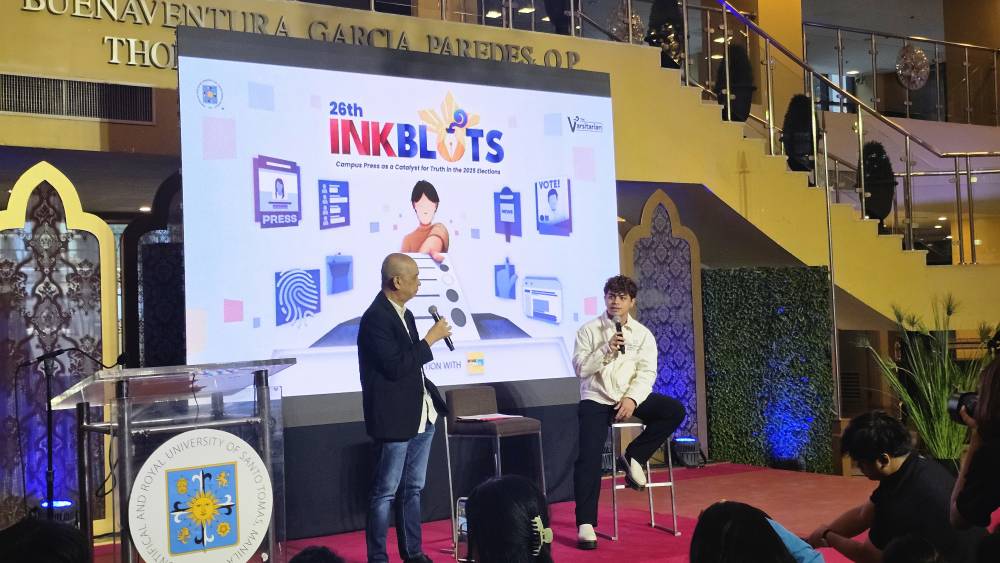
Earlier this month, The Varsitarian hosted the 26th Inkblots Fellowship, with the theme “Campus Press as a Catalyst for Truth in the 2025 Elections,” at the University of Santo Tomas (UST).
Crucial profession
The event gathered around 300 fellows from over 40 schools and publications nationwide for sessions on news writing, photojournalism, sportswriting, opinion and editorial writing, reporting on the news, religion reporting, and feature writing by seven outstanding journalists.
The event officially began with the opening remarks of assistant professor Christian V. Esguerra, The Varsitarian’s assistant publications adviser. Back in 1999, he was editor in chief of The Varsitarian. He spoke frankly about the upcoming elections, mentioning that many of the candidates are from political dynasties. Esguerra pointed out that journalism is crucial in disseminating information to help voters be informed. “I strongly urge you to use your platforms for good. Let’s make people care and raise their standards,” he said.
The first speaker was Camille Diola, chief editor of Philstar.com, who talked about running a digital newsroom. Diola reminded us of the wrenching changes that have happened in journalism. As journalists, Diola said, we have to focus on our audience. Their attention demands that we balance speed with value, presentation with visualization, and innovation with experimentation—qualities that create a transformative viewership.
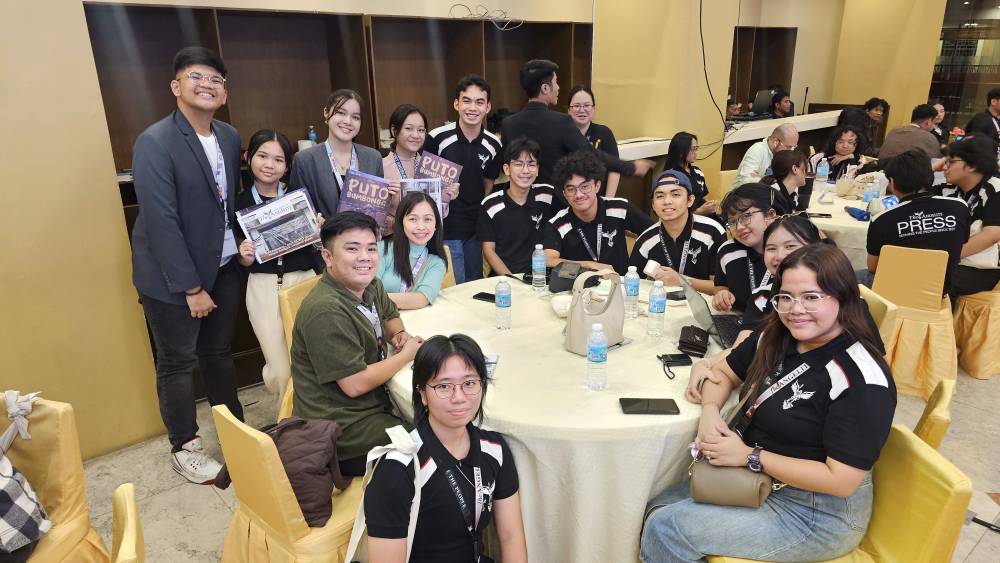
We were then introduced to John Nery, a columnist and editorial consultant for Rappler. Nery discussed the qualities of opinion journalism, saying that while it deals greatly with one’s opinion, it “must always be fact-based, public-spirited, independent, and news-consumable.”
He added that student journalism or professional journalism is also supposed to change us and our perspective on things. “We have a role to play as campus journalists not only to focus on what’s happening in our respective campuses but also to train the spotlight on what’s happening elsewhere,” Nery said.
Mock press conference
For feature writing, we had Nestor Cuartero, an entertainment columnist for the Manila Bulletin and an editor for The Market Monitor, who caught us by surprise when he entered with actor Kokoy de Santos.
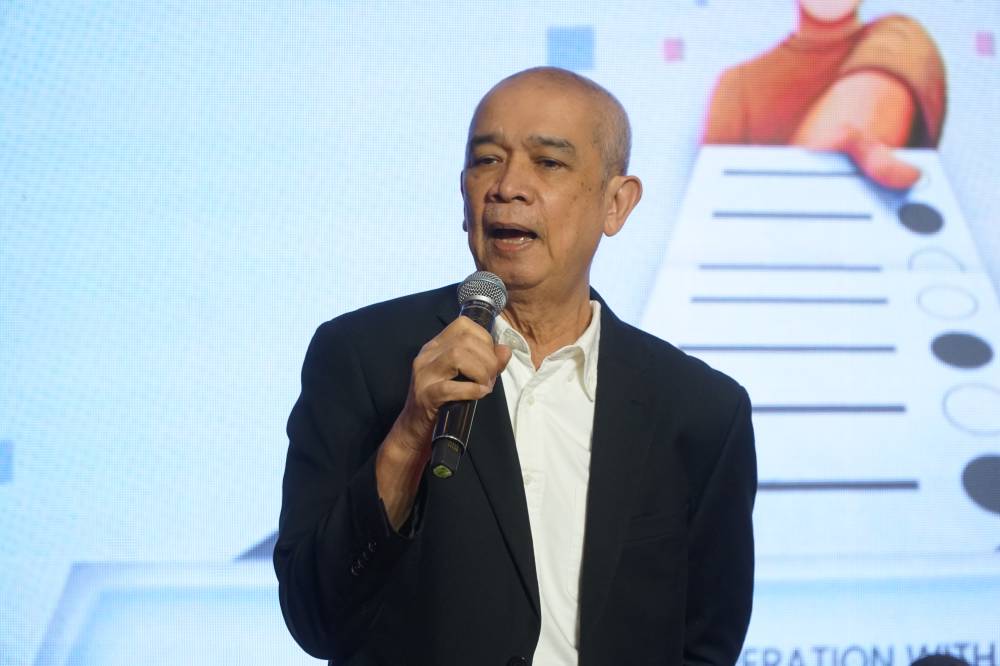
De Santos was brought in by Cuartero for an unexpected mock press conference with the fellows. After a brief introduction, he instructed the crowd to ask questions. At that moment, my ambush interview skills moved me to be the very first person to ask away.
Like we did with the other speakers, my pals and I did an ambush meet-and-greet with Cuartero once his talk ended. We got the opportunity to ask him some questions about feature writing. I also asked him about his professional journey in journalism. I learned that he served as a faculty member and former UST Journalism program coordinator. One trivia that surprised me is that he knows my editor at Inquirer Lifestyle, Pam Pastor, because he taught her when she was a student in UST.
The following day, we began with a speaker on religion reporting, Paterno Esmaquel II, a senior multimedia reporter for Rappler. Paterno shared the reality of religion reporting, how it focuses not just on one but on different religions. Because ours is a predominantly Catholic country, he explained the importance of also giving space to other religious groups.
Esmaquel referenced his coverage of the Iglesia Filipina Independiente, better known as the Aglipayans, and their religious practices during the Holy Week observance. He also shared Rappler’s Faith Chat room, where regular people can contribute to the different religious observances and be featured on the Rappler page.
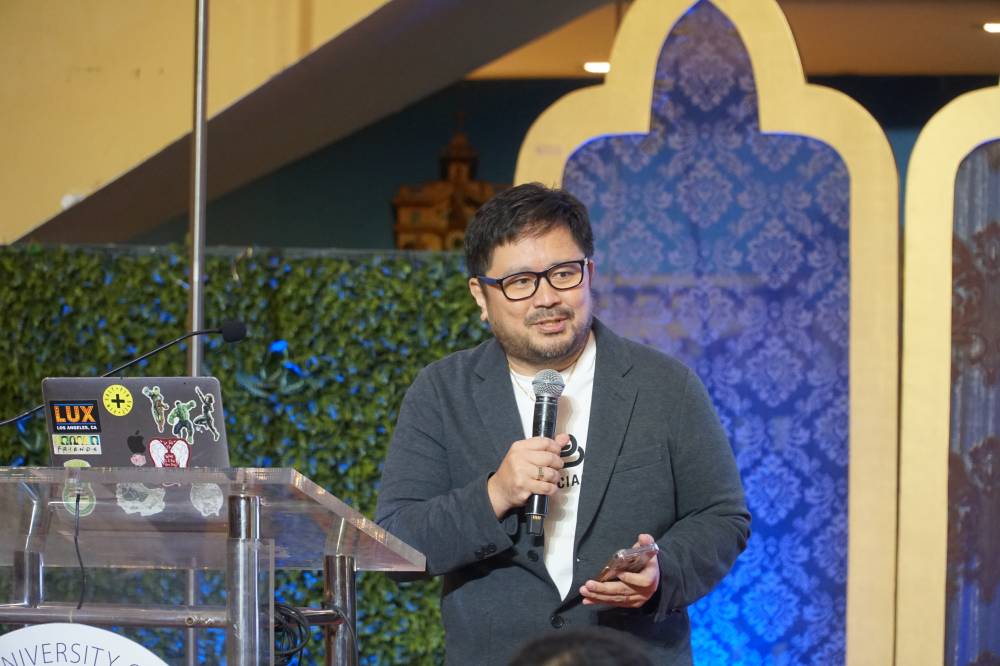
The second speaker of the day hit close to home, the Philippine Daily Inquirer’s Sports editor, Francis Ochoa. It was a thrilling moment because I interned for him years ago.
He focused on how everyone is a storyteller, referencing pole vaulter EJ Obiena’s social media pages as great examples of simple storytelling. He then told us to carry on with journalism as we, in his words, “move on to the next phase of the sports industry.”
Election reporting
After our break, we heard from Lian Buan, a multimedia reporter for Rappler, about reporting on the elections. She shared her story of covering the 2022 elections, particularly being assigned to cover then-candidate Ferdinand “Bongbong” Marcos Jr.
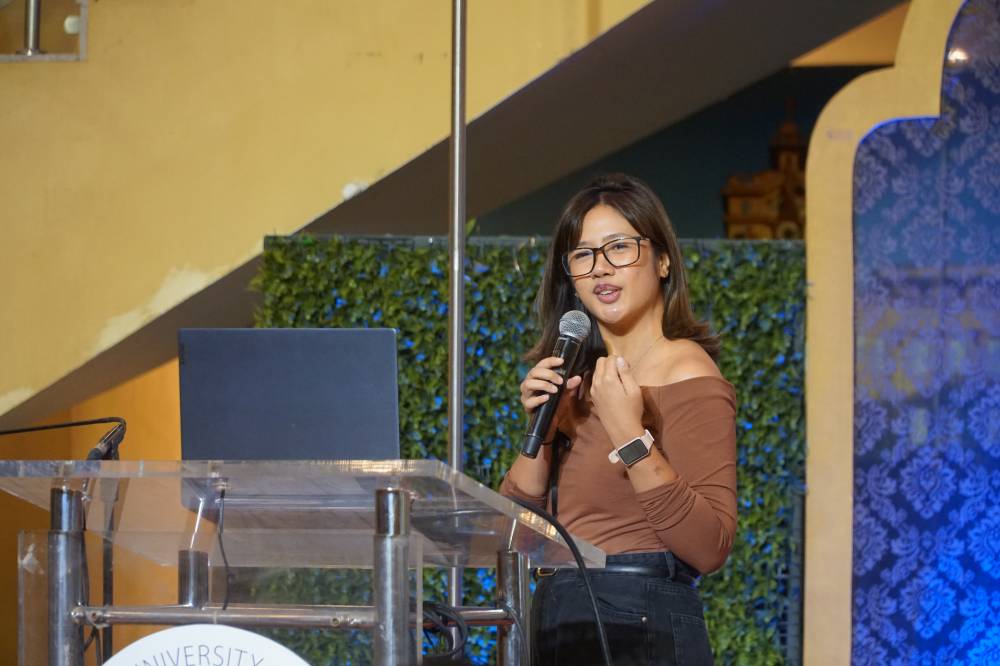
She recalled the struggle of trying to get an interview or statement from Mr. Marcos, and shared how her coverage was not just focused completely on the moves of Marcos, but also of his supporters.
The last speaker was Fernando “Jun” Sepe Jr., the former deputy editor for the multimedia section of ABS-CBN. A member and former chair of the Photojournalists’ Center of the Philippines, he also worked as a photojournalist for BusinessWorld and the Associated Press. He told us the tales of his EDSA days when he covered the People Power Revolution and the Mendiola massacre. Sepe taught us fellows the necessary knowledge to be good photojournalists, as well as the evolution that photojournalism has taken over the years.
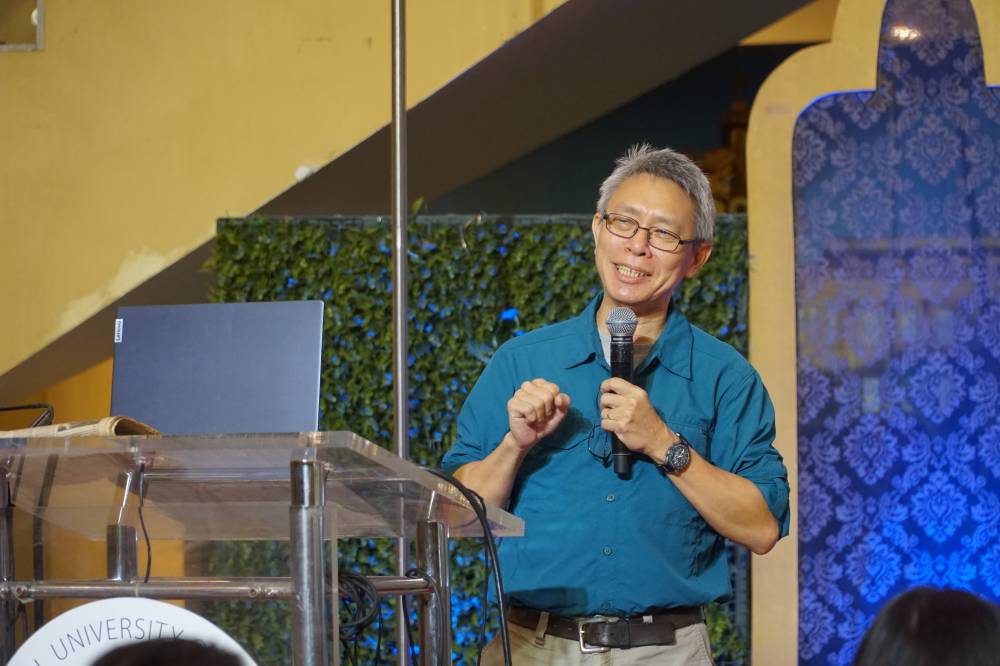
New connections
We took the opportunity to introduce ourselves to other fellows. We were happy to make new connections with fellows from Holy Angel University. They were kind enough to share with us the latest copy of their official paper, The Angelite. We happily shared conversations about our campus and the various events that USTAC recently launched to bolster journalism—writing workshops and partnerships with news agencies to train our campus journalists.
Some time later, my friend Abena Carating and I were approached by the editor in chief of the Weekly Sillimanian. They had noticed our active participation in the program and interviewed us for a special project for their social media accounts. They asked: “How can campus journalism be a catalyst for truth in the upcoming 2025 midterm elections?”
My friend responded, “I believe that if we approach them in a less formal manner… we can get them more passionate about this topic and help them initiate their own research about the candidates.”
The 26th Inkblots was more than just meeting the stars of journalism, it was a call to get the light of truth out. I felt empowered by the speakers who assured us campus journalists that our efforts hold power in the world.
To echo the message of professor Joselito B. Zulueta, The Varsitarian’s publications adviser, “Let us strive to uphold the highest standard of our craft, ensuring that our work remains a beacon of integrity and significance.”

